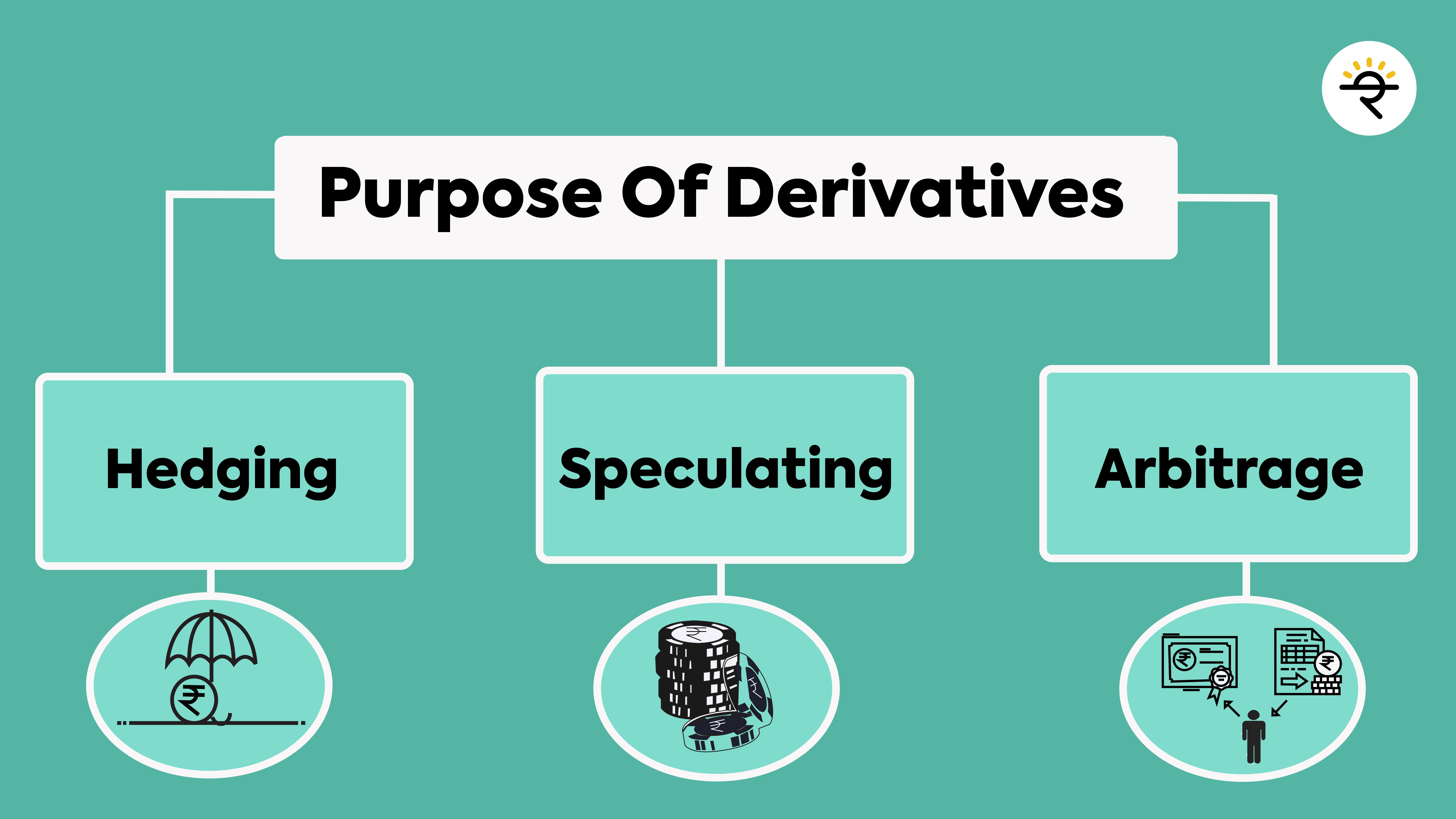The Indian financial market is divided into two types – Primary and secondary markets. Primary markets include money markets, IPOs, and more, while secondary markets include stock exchanges. Now, stock markets are further divided into the spot (cash) and derivative markets.
But what are derivative markets? This blog explores the various types of derivative instruments and will help you understand whether derivatives are a safe investment. Read further to know more.
What is a derivative?

Derivatives are a set of financial instruments or contracts that derive their entire or basic value from the movements of an underlying asset. Here, an underlying asset could mean stock, currency, commodities (oil, gold, etc.), or even an index.
In simpler words, a derivative is a promise, a contract wherein two parties agree to exchange value or an asset at a predetermined price and date. It is important to note that derivatives are not products. The value of a derivative contract depends on the value of the underlying asset.
Return on equity: Highlights
- Derivatives derive their value from underlying assets, which can be a stock, currency, or even an index.
- Financial derivatives include options, futures, forwards, and swaps.
- Derivatives can be used for hedging and accessing different markets.
- Derivatives are high-risk investment instruments.
Types of derivative
Based on the nature of the contract –
- Options – These are derivative instruments that give the buyer the right but not the obligation to buy an underlying asset at an agreed price on a future date. It can be of two types – the call option and the put option.
- Forwards – Forwards are agreements between two parties for the exchange of an asset at a specified price. These instruments can be customised and are traded OTC (over-the-counter).
- Future– Similar to a forward contract, futures contracts are also agreements between two parties to exchange an asset at a predetermined date and rate. However, they can be traded on exchanges.
- Swaps – These are contracts that agree to exchange swaps or series of cash flows. The most common types are interest swaps, equity, currency swaps, and credit swaps.
Based on the underlying asset –
- Stock – A derivative contract where the underlying asset is a stock
- Currency – A derivative contract where the underlying asset is a currency
- Index – A derivative contract where the underlying asset is an index
Based on trade place –
- OTC (over-the-counter) – Such contracts may be private agreements between two or more parties that are not traded on exchanges.
- Exchange-traded derivatives – Such contracts are traded and managed by derivative markets that act as an intermediary.
Understanding derivatives

Let’s take an example to understand the functioning of financial derivatives.
Assume on 1st January, the price of 1 kg silver is around Rs 50,000. Mr A and Mr B entered an agreement wherein Mr B agreed to buy 10 kg of silver on 1st April (i.e. three months later) at Rs. 50,000. Mr B, through a contract, is obligated to pay Rs. 5,00,000 to Mr A on 1st April, regardless of what price the silver trades on that particular day.
Now, Mr A expects the price of silver to fall. And hence wants to lock in a higher price. The reverse applies to Mr B, who expects the price to fall. Now, there can be three possible outcomes in a situation.
- The price of silver rises above Rs. 55,000
- The price of silver falls below Rs. 55,000
- Price remains unchanged
If the price rises, Mr A stands to benefit from the difference. On the contrary, if Mr B’s prediction comes true, Mr A would be obliged to sell at a lower price to Mr B.
In reality, most financial derivatives function similarly. The underlying asset, time period, type of trade, and contracts may vary. But the underlying principle and outcomes remain the same as above.
Advantages of derivative trading
- Helps in hedging
Contrary to popular belief, derivatives can be used as an excellent risk management tool. For instance, you can take one stance in the stock market and another in the derivatives market to hedge your position.
Assume you buy a certain number of shares of a company in the stock market. As prices increase, your investment value also increases. But, for some reason, you feel that the stock will fall to a certain level in the future. Now, you can use F&O here to short your position on the stock. If, as per prediction, the stock price decreases, you can make good profits. Sure, your investment value in the stock market will come down, but the same has been covered/hedged through derivatives.
Do you observe how your risk is considerably diluted through hedging (using derivatives)?
- High profits
It is no secret that the main reason why investors and traders enter derivatives markets is more than average profits. As explained above, even with a minimal amount (margins), abnormal amounts of profit can be cashed in.
- Access to wider markets
Derivatives can help traders and investors access wider markets. For instance, if you have a bullish stand on the banking sector in India, you can buy a call option contract of the sector rather than buying one or two bank stocks.
- Helps attain market equilibrium and determine asset prices
Derivatives typically depict the movement of underlying assets. In that sense, they can help individuals determine the actual price of a particular asset or stock and also help attain market equilibrium through arbitrage (purchase and sale of stock in different markets).
Disadvantages of derivative trading
- High risk
Derivatives are extremely risky. If the prediction is incorrect, you may incur heavy losses. Moreover, the underlying assets are extremely volatile. So, if they move against your bet, you may lose all your money. Furthermore, OTC (over-the-counter) derivatives like forwards and swaps are not regulated. Here, the risk of default may be very high.
Lastly, even minute changes in price or asset movement can greatly affect your profits.
- Speculative nature
Any financial instrument that calls for speculation can be considered high risk. Derivatives fall in this very category. Ultimately, derivatives predict and bet on market/ asset movements. And, there is always a possibility of the prediction not actualising. Also, it is nearly impossible to predict the movement of any market or asset.
The probability of profits is always 50/50, and the odds may not always tilt in your favour.
- Too complex to understand
In reality, derivatives are extremely complex and are not meant for the novice. After all, it is a type of legal gamble, which may or may not heed your fortunes. All said, to succeed as a derivatives trader, one needs excellent command over technical and fundamental analysis, hedging tools, methods, strategies, and more.
Conclusion
Derivatives are contracts that allow investors to bet on the movement of underlying assets. These contracts can be in the form of options, futures, forwards, and swaps. It is paramount to note that though derivatives are known for their high profits, they are extremely risky. Not all investors may have the risk appetite to trade derivatives. Consult your financial advisor to understand in detail the complexities of derivatives and then only then invest.



